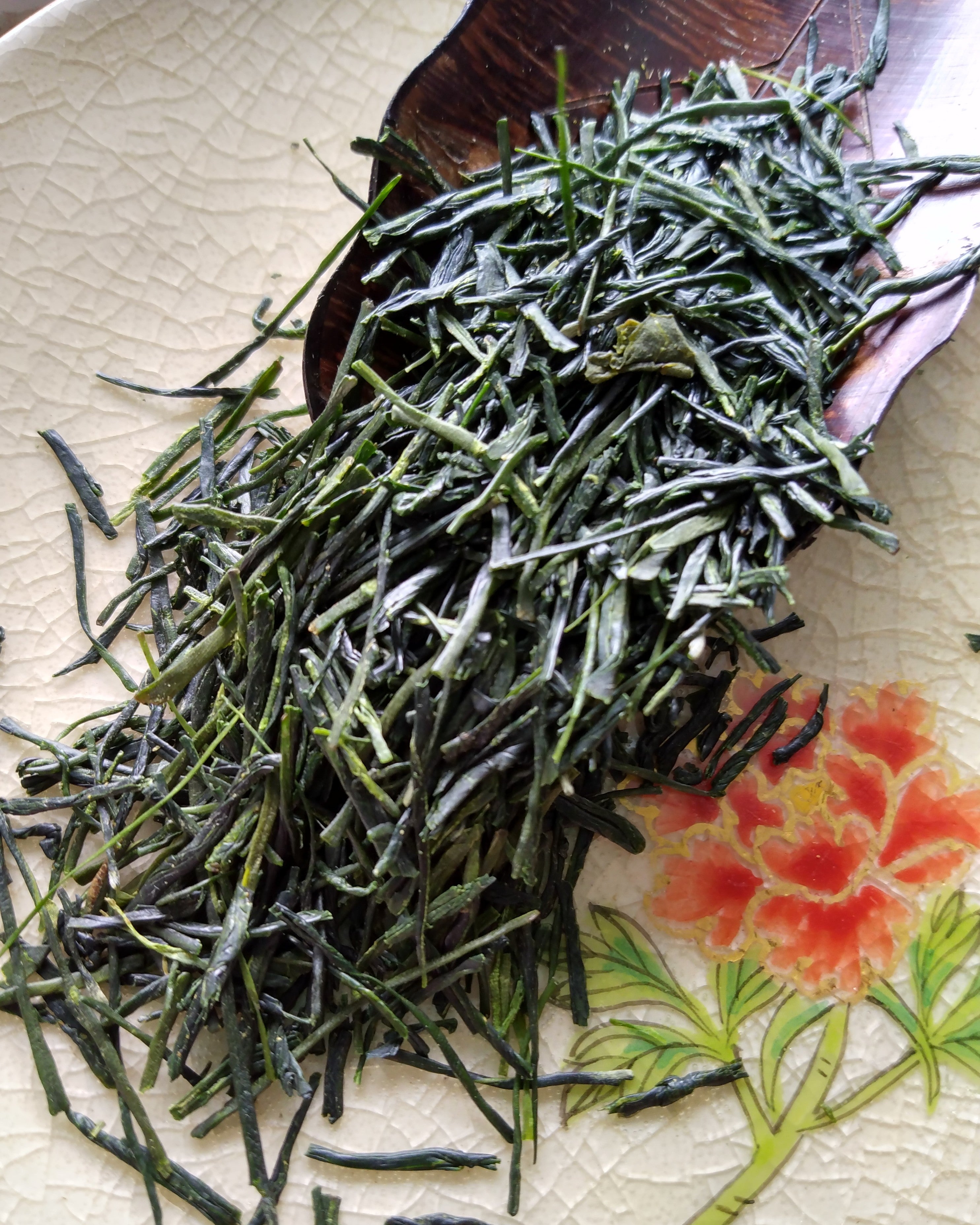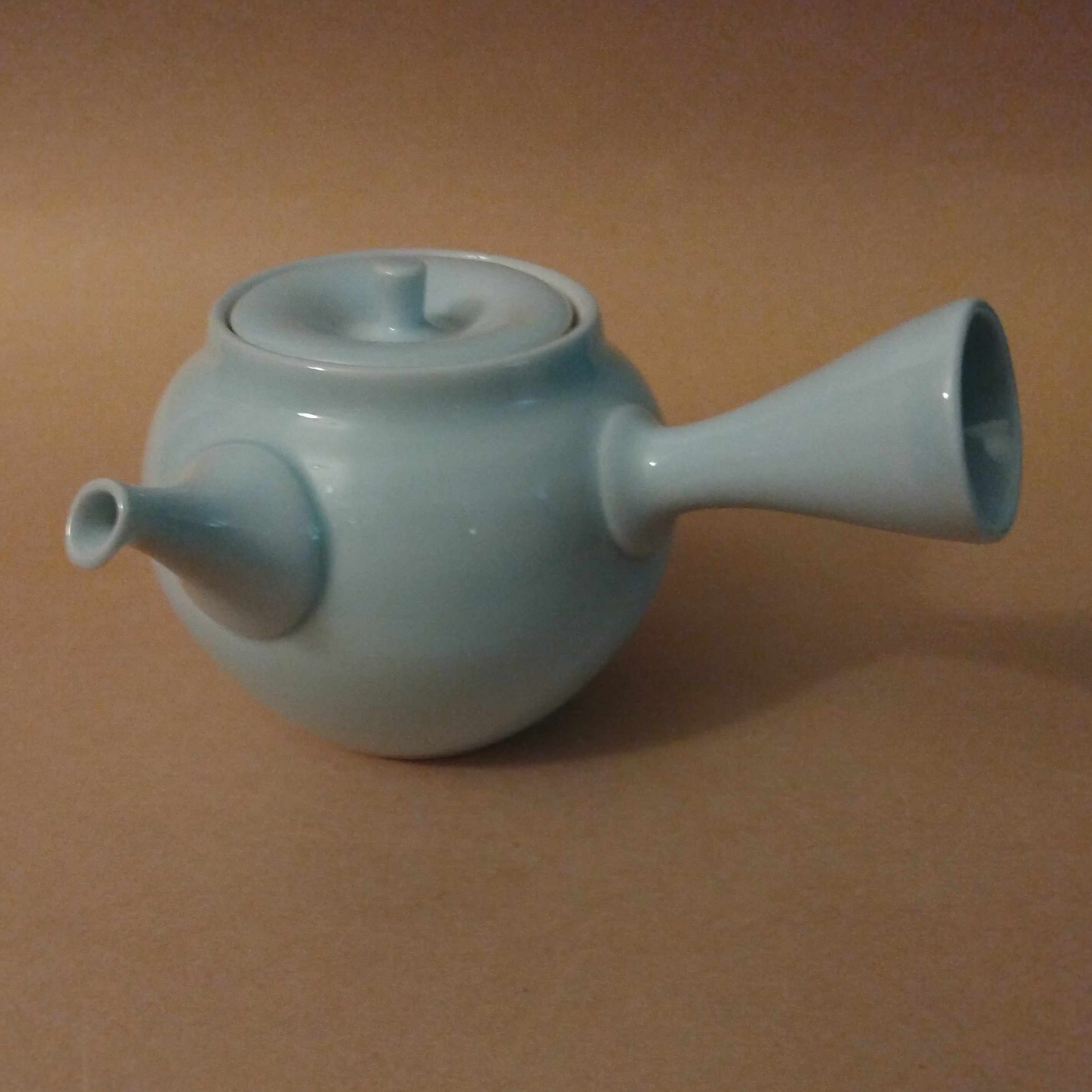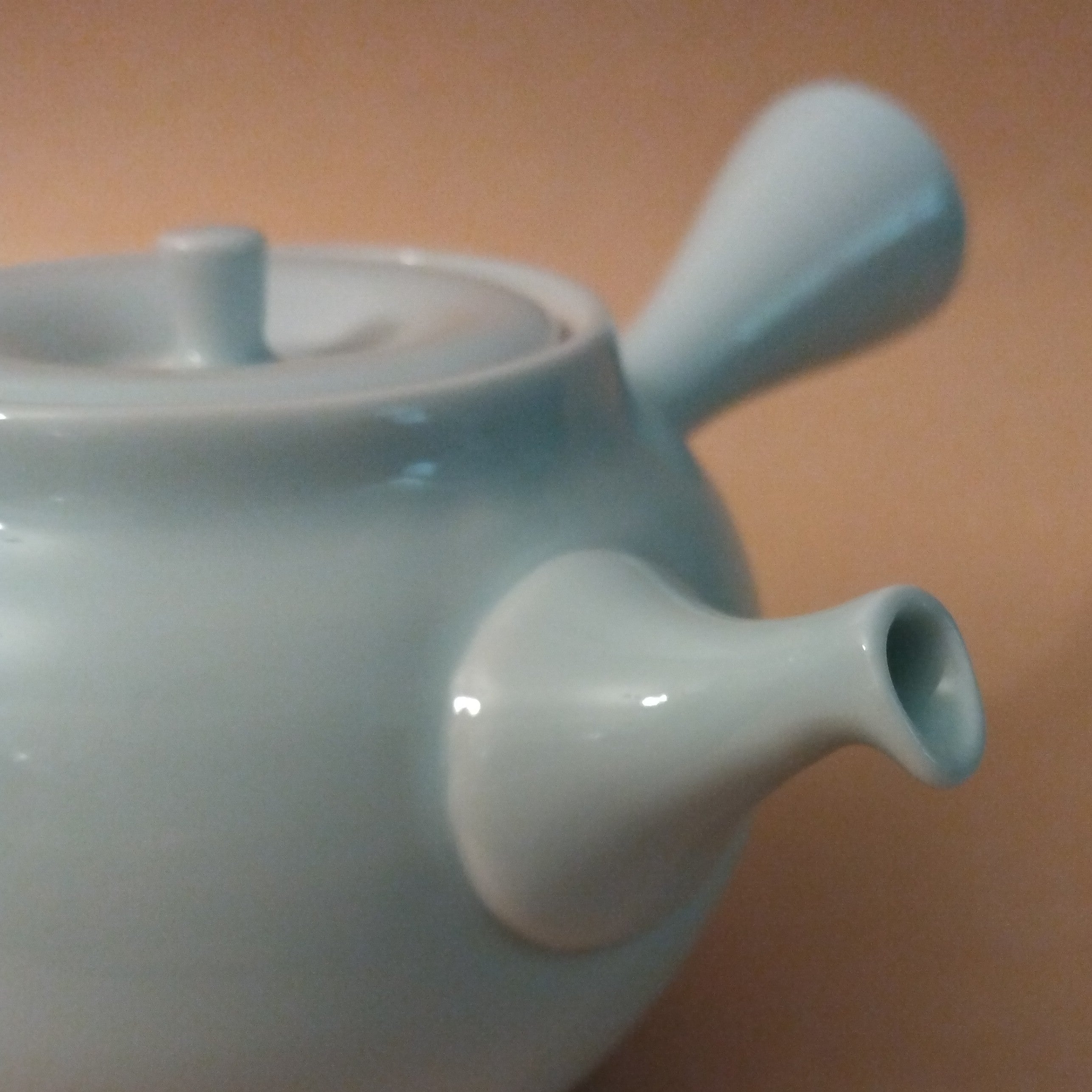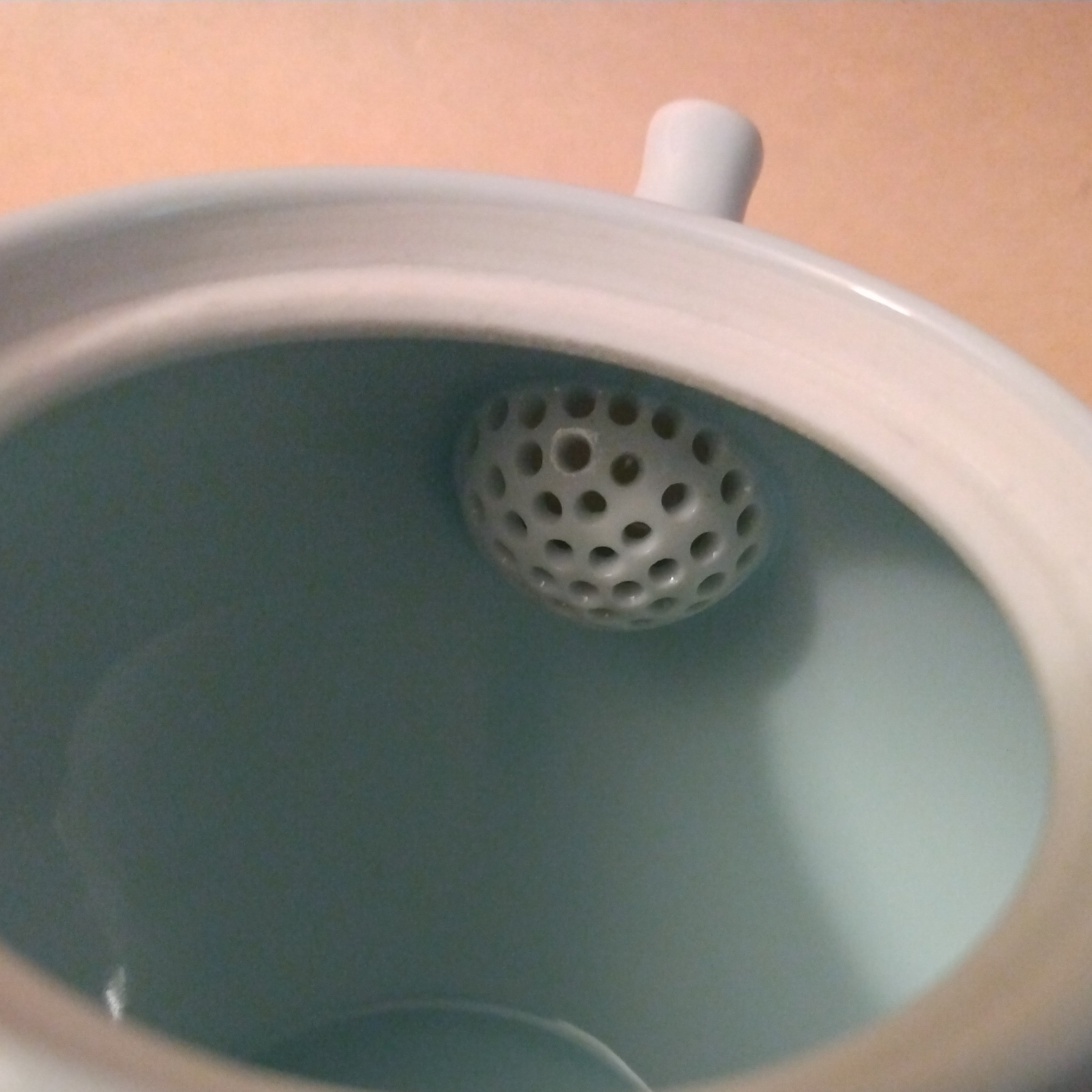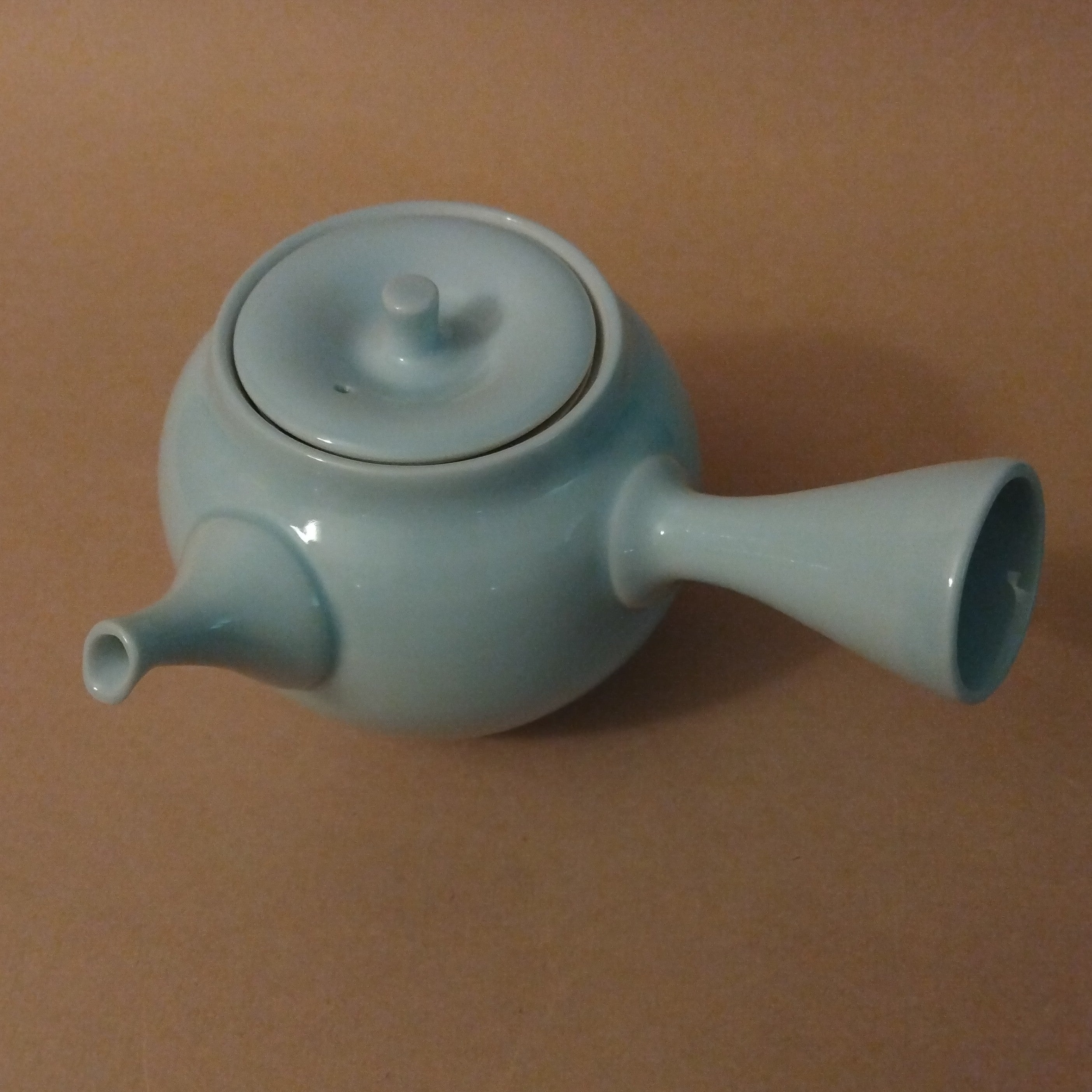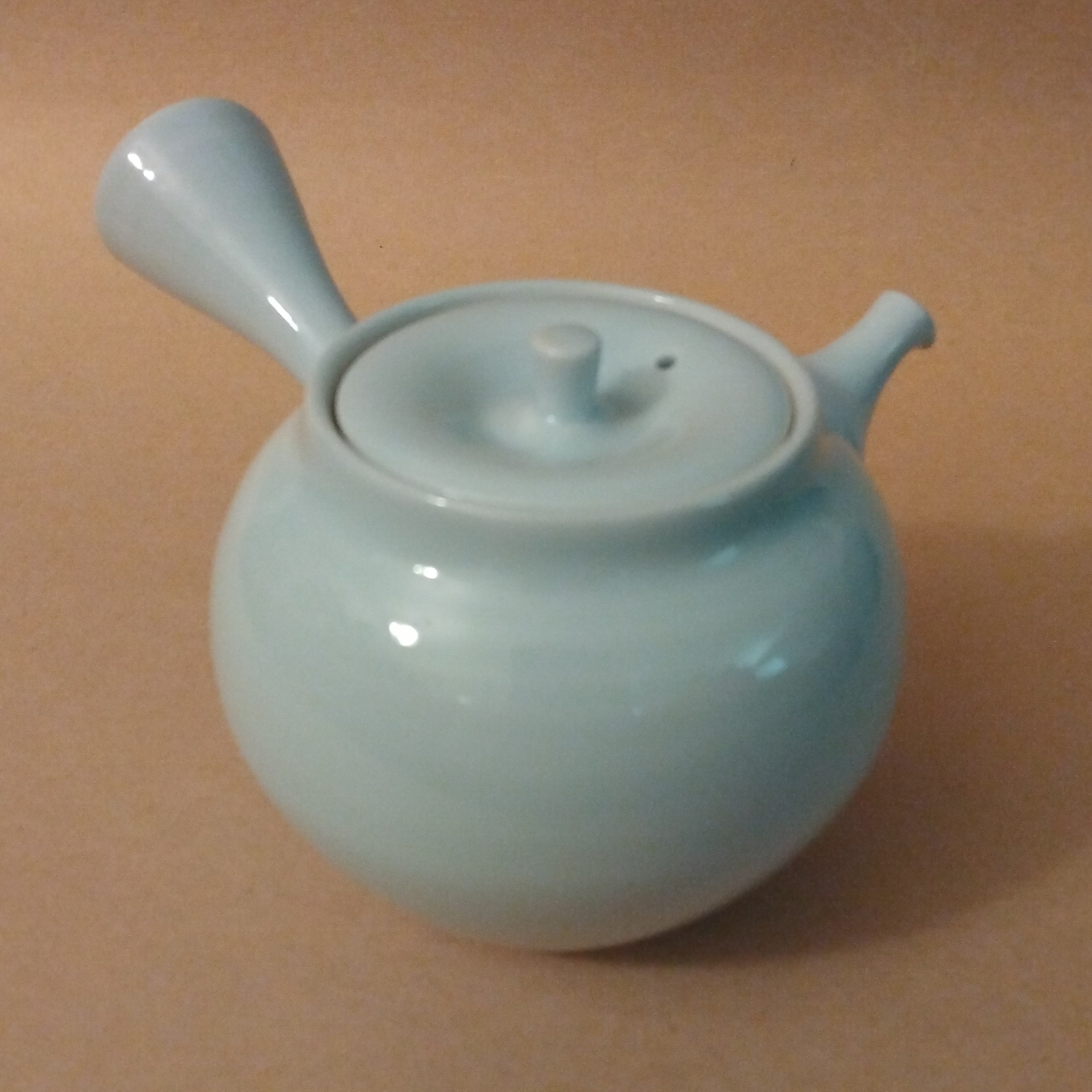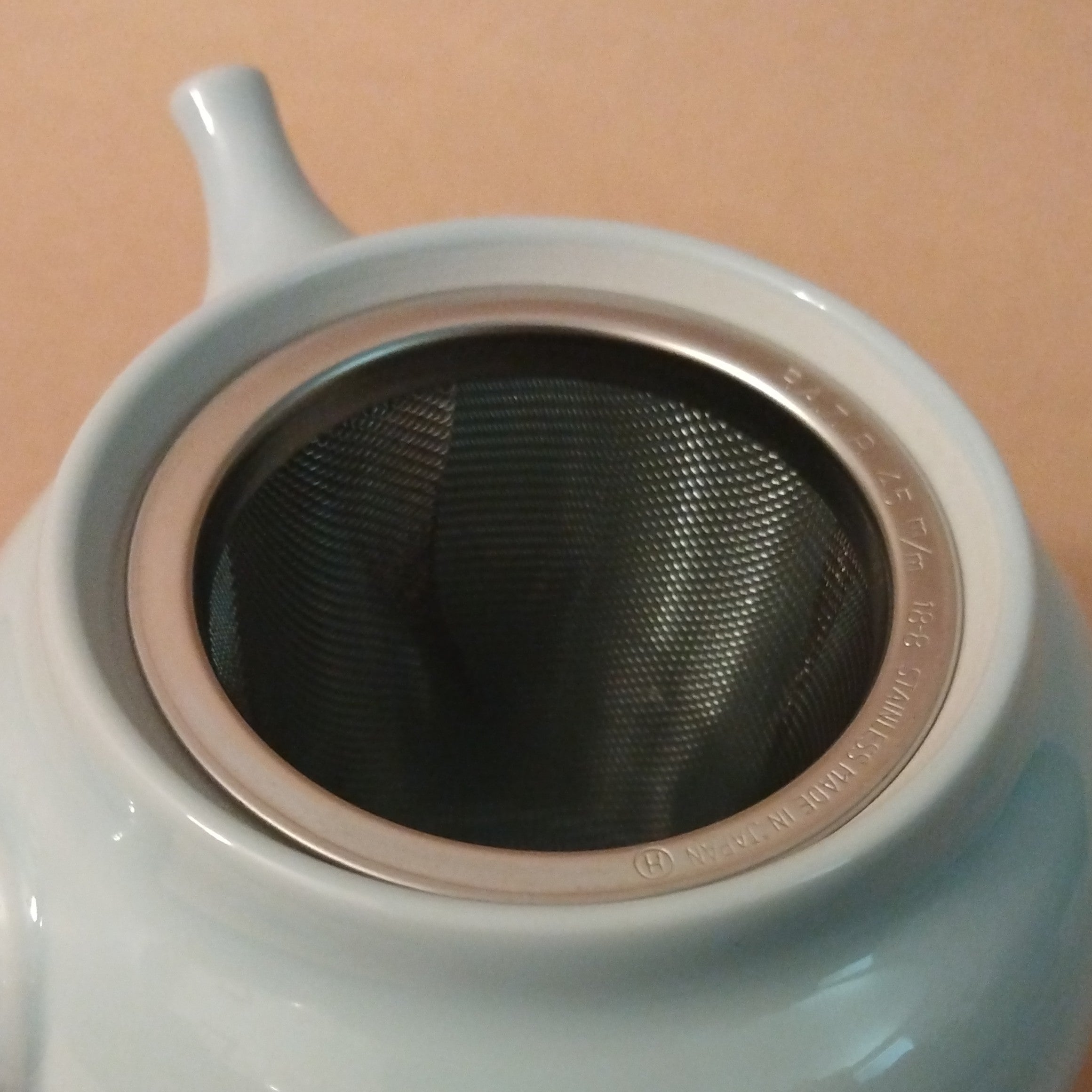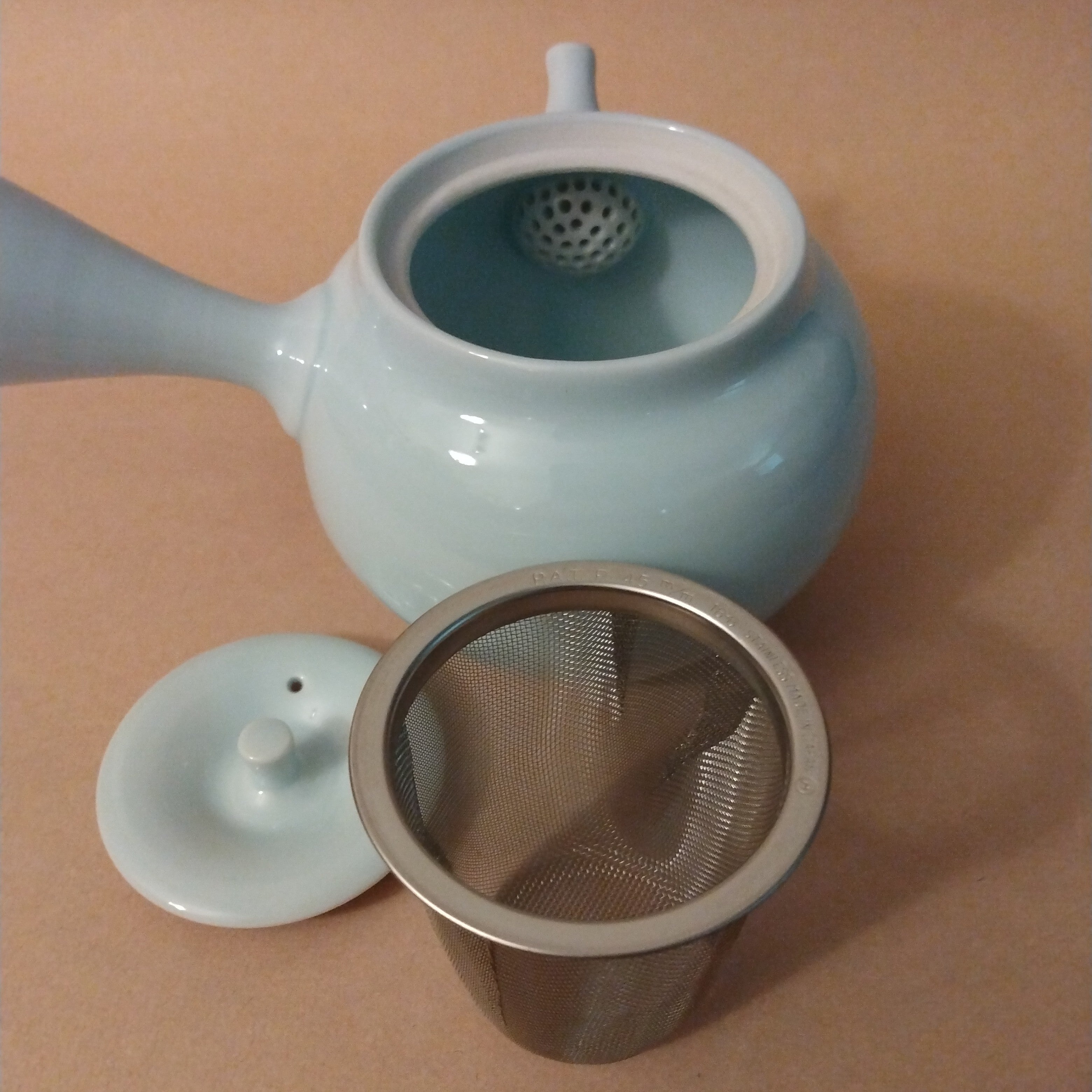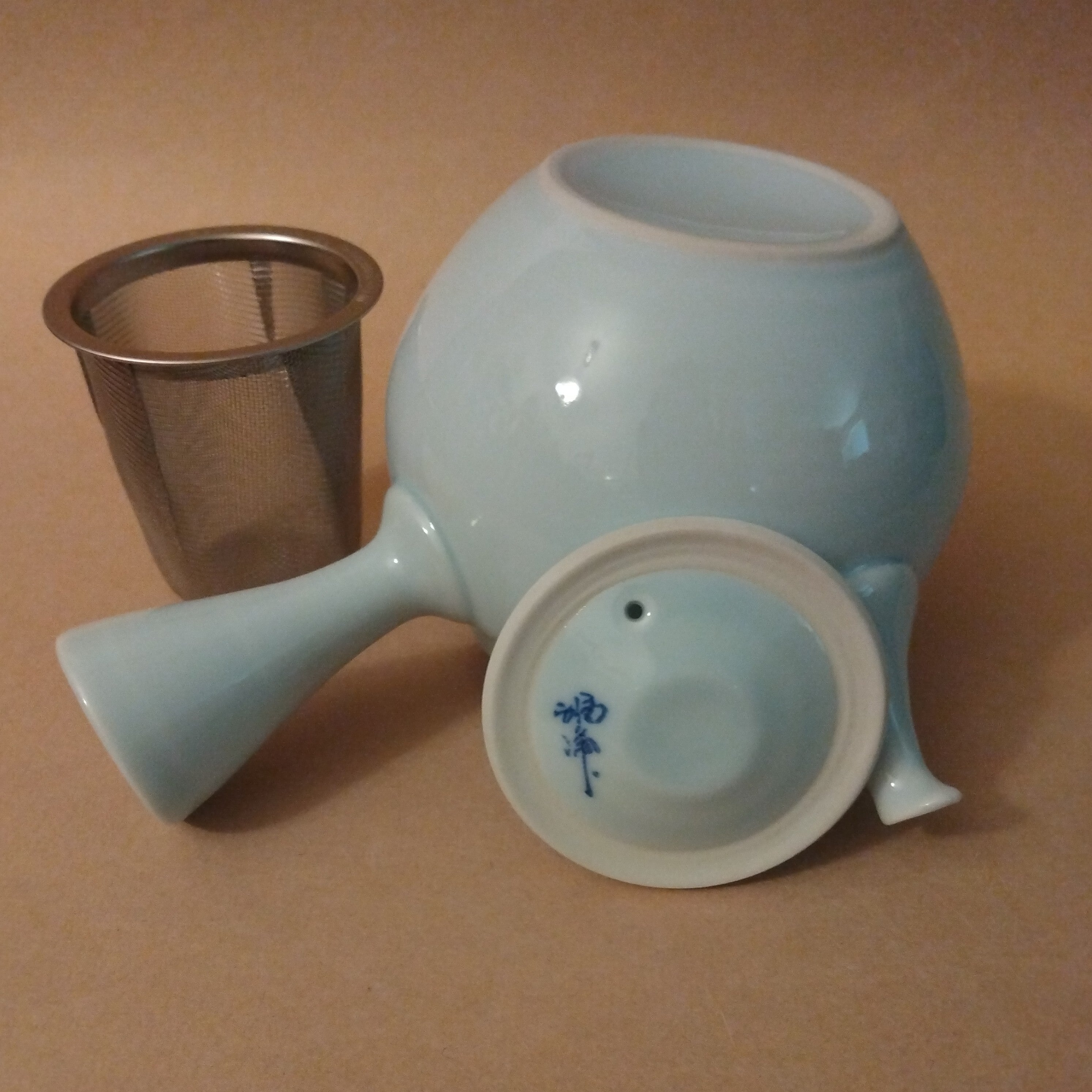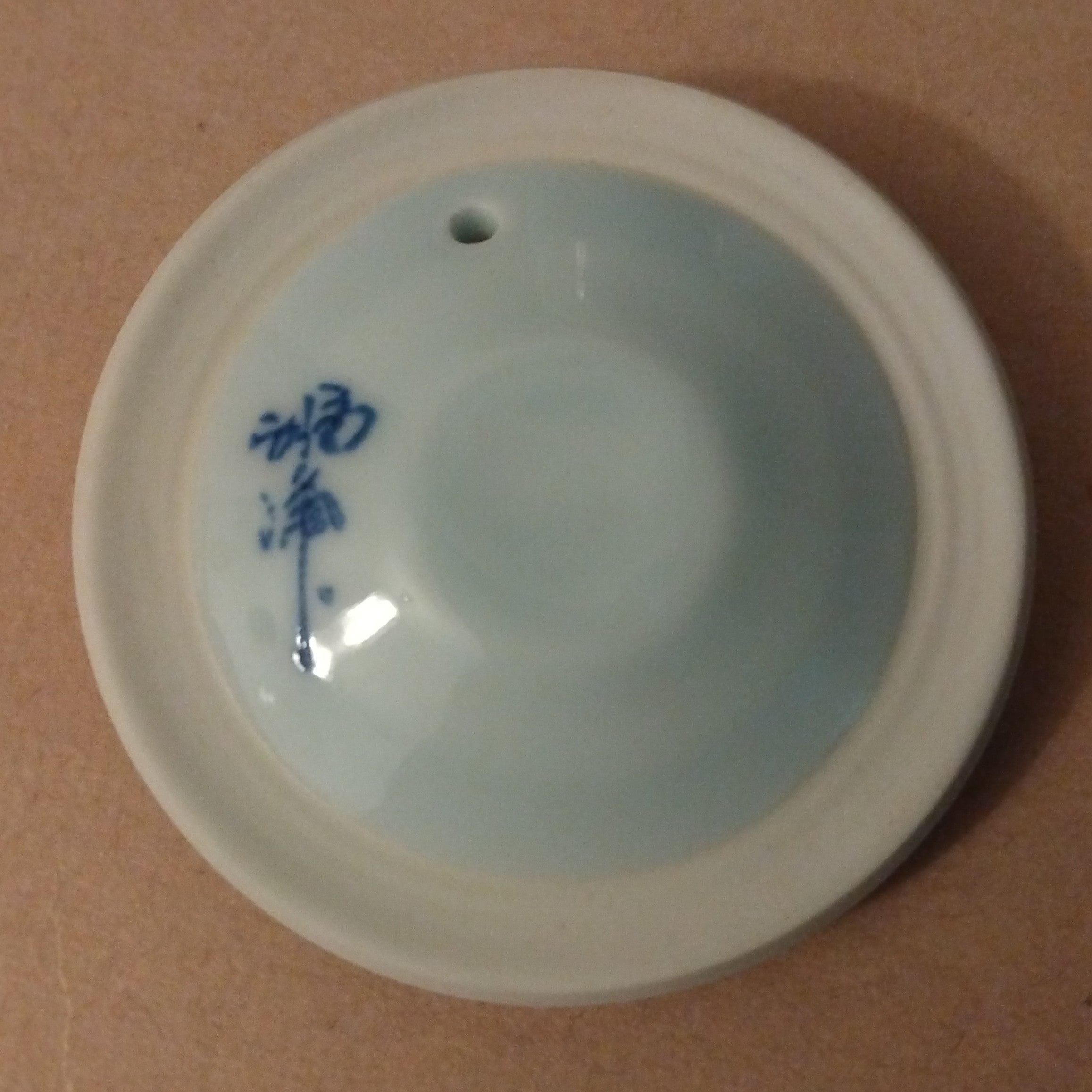Description
Light Blue Porcelain Hasami-yaki Kyusu (Side-handle Tea Pot) by Fukuhou Kiln; Higashisonogi District, Nagasaki Prefecture. 270cc/9.1oz. H.3.125"(8cm) x W. (including handle)5.5"(13.5cm) x Bowl Diameter 3.5"(9cm). Weight 190 grams. Ceramic mesh interior strainer, plus a stainless steel removable strainer basket also included.This tea pot is well-balanced and elegant, yet designed for everyday use. Whereas unglazed Tokoname ware tea pots are best used for teas without any added flavors or aromas (including standard Japanese teas like Genmaicha and WaKoucha), porcelain Hasami ware does not absorb aromas and can be washed thoroughly, making this a versatile tea pot for Japanese green or any other tea. Also, please see our Hasami-yaki Tea Cups HY-CH80 that perfectly matches this Tea Pot.
The history of pottery production in Hasami Town goes back over 400 years, to the late 1500's. In the early 1600's when porcelain clay was discovered and utilized by Korean potters forcibly brought back to Japan in Hideyoshi's "Pottery Campaigns", the greater region of Artita, Hasami, and the Ports of Imari and Dejima, developed into a major production and distribution hub for Japanese porcelain production and export. In Hasami, "sometsuke", underglaze blue decorated wares, and containers for soy sauce and sake were the most common items in the early years. The humble, rustic, and inexpensive "kurawanka" bowl being among the most produced in Hasami, and widely sold and used throughout Japan. Although a vessel used by the common people, it elevated the standard of table ware for the average Japanese of the day. It also became a mainstay of the Omura Domain which controlled the region's pottery industry.
Hasami had become something of an subcontractor for other larger pottery centers, and the name of Hasami was often overshadowed by those of more famous towns like Arita for pottery production and Imari for shipping. In recent years, however, new life has been breathed into Hasami pottery production to regain the recognition that makes their pottery stand out in the region. Current production focuses on the elegance of porcelain modernized for contemporary everyday use. There are also pottery festivals in April and November, self-guided pottery kiln tours, as well museums and galleries to visit. There are about 40 members of the Hasami Ceramic Industry Cooperative, but there are also many, many more independent kilns in the Hasami region.
